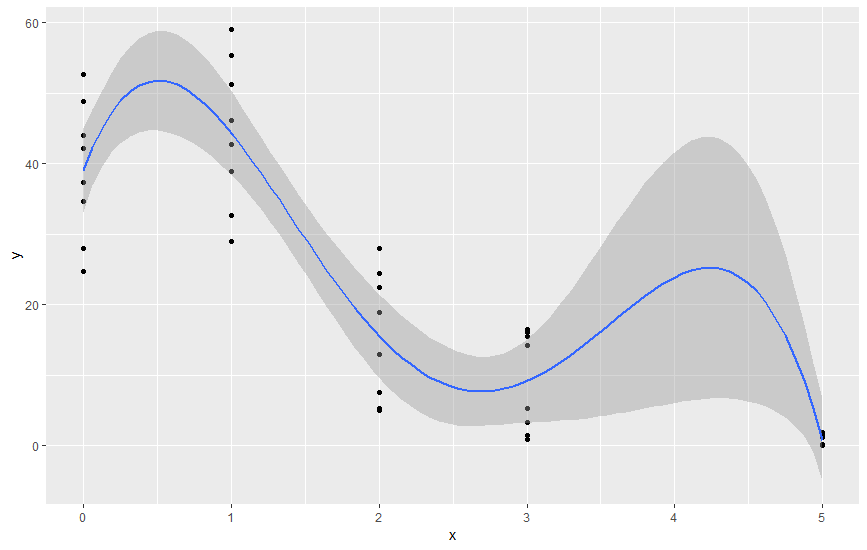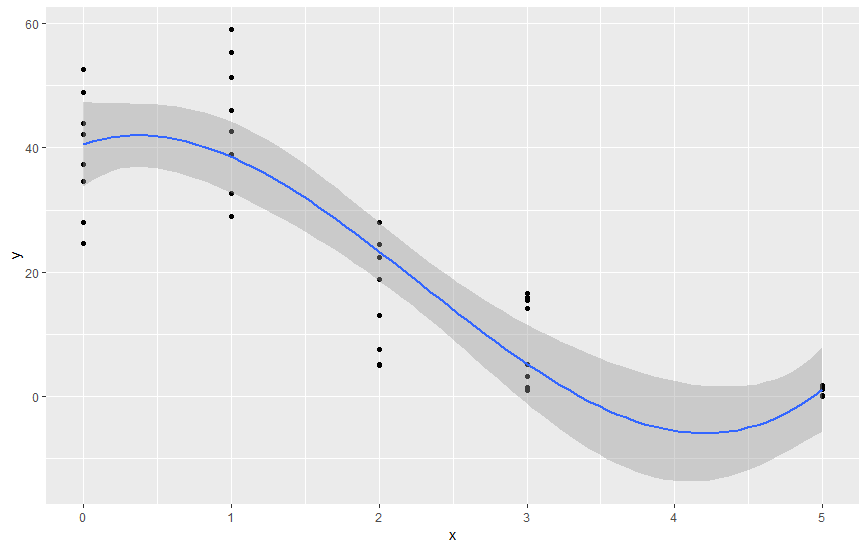I am currently trying to fit a polynomial model to measurement data using the lm() function.
fit_poly4 <- lm(y ~ poly(x, degree = 4, raw = T), weights = w)
with x as independent,
y as dependent variable
and w = 1/variance of the measurements
summary(fit_poly4)
Call:
lm(formula = y ~ poly(x, degree = 4, raw = T), weights = w)
Weighted Residuals:
Min 1Q Median 3Q Max
-1.57259 -1.02934 0.00252 0.98814 1.48758
Coefficients:
Estimate Std. Error t value Pr(>|t|)
(Intercept) 39.0375 3.4460 11.328 2.94e-13 ***
poly(x, degree = 4, raw = T)1 55.6996 17.7858 3.132 0.003501 **
poly(x, degree = 4, raw = T)2 -71.8194 19.9575 -3.599 0.000979 ***
poly(x, degree = 4, raw = T)3 23.8642 7.0456 3.387 0.001759 **
poly(x, degree = 4, raw = T)4 -2.4069 0.7507 -3.206 0.002872 **
---
Signif. codes: 0 ‘***’ 0.001 ‘**’ 0.01 ‘*’ 0.05 ‘.’ 0.1 ‘ ’ 1
Residual standard error: 1.069 on 35 degrees of freedom
Multiple R-squared: 0.8903, Adjusted R-squared: 0.8778
F-statistic: 71.04 on 4 and 35 DF, p-value: 2.637e-16
While this gives me nice enough results on the statistical side, the derived polynomial
y = 39.0375 + 55.6996*x - 71.8194*x^2 + 23.8642*x^3 - 2.4069*x^4
specifically the second peak between 3 and 5 (see picture) does not make sense for my specific case.
Therefore I want to try and use a given polynomial formula
y = -3,3583*x^4 + 43*x^3 - 191,14*x^2 + 328,2*x - 137,7
in lm().
I tried
fit_poly4 <- lm(y ~ 328.2*x-191.14*I(x^2)+43*I(x^3)-3.3583*I(x^4)-137.3, weights = w)
which just returns
Error in terms.formula(formula, data = data) :
invalid model formula in ExtractVars
How do I need to write my polynomial in lm() to get this to work?
Alternatively is there any way to force lm() to not produce a second peak but to smoothly decrease from 3 to 5?
I appreciate your help in advance, thank you.
Edit: The data represents biomass (y) over different vol% nutrient concentrations (x) and should be continuous.
I've also tested simpler polynomials which either come back to imprecise in case of degree = 2
or have their own flaws (negative biomass) in case of degree = 3



